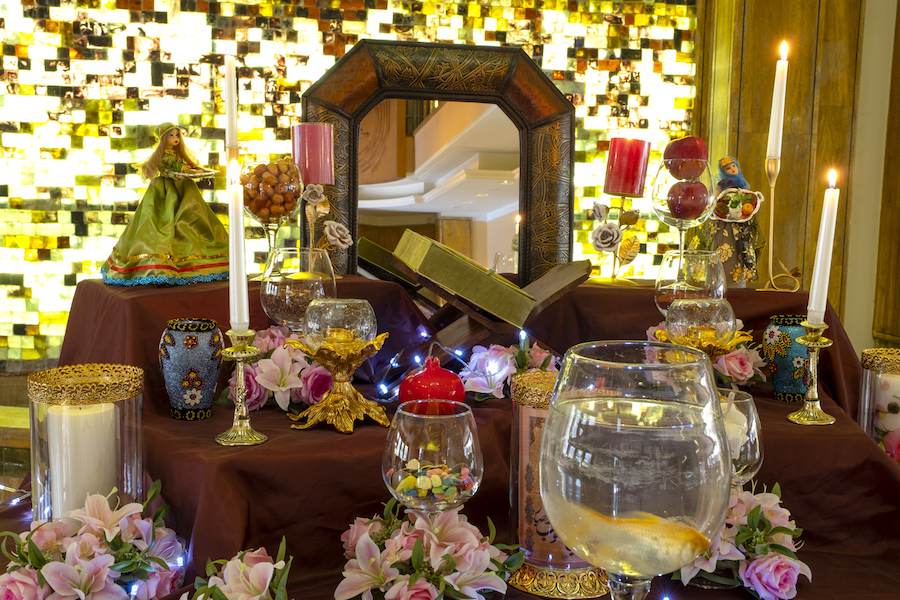Nowruz: What to Know About the Persian New Year

For 3000 years, Iranians and many others worldwide have celebrated Nowruz (Persian New Year) by arranging a table called Haft-Sin. It consists of the main seven elements of nature and civilization. Photo by FarzadFrames, iStock
Nowruz (also known as Norooz or Nawroz, among other spellings), the Persian New Year, is an ancient celebration marking the precise moment winter ends and spring begins. For Iranians of all religions and many others throughout the Middle East, South Asia and the Mediterranean, the return of spring carries great spiritual significance — symbolizing the triumph of good over evil and joy over sorrow. Nowruz, or “new day” in Farsi, falls on the spring equinox on the Iranian Solar Hijri calendar, so its date on the Gregorian calendar doesn’t correlate precisely. Thus, Nowruz begins on March 20 or 21 and lasts 13 days. Each day represents a month of the year. The 13th day is spent releasing bad luck, as 13 is considered unlucky.
Nowruz traditions vary between regions, but there are many universal themes. Over 12 days, people visit the homes of family, friends and neighbors. Children receive small gifts, and visitors enjoy tea, pastries, fruits, mixed nuts and other light food. On the 13th day, everyone spends the day outside in nature.
Shirin Noori, a biotechnology senior and secretary of the Iranian Student Association, said one of her favorite traditions during the holiday is the 13th day celebration.
“We have something called Sizdah bedar, which is a picnic where family and friends join and spend a day in nature — to reverse the effects of the 13th day being unlucky, to lucky and prosperous by appreciating nature,” Noori said.
Perhaps the most recognizable feature of the Nowruz celebration is the sofreh-ye haft sinn, or cloth of seven dishes. Celebrants set a table filled with items representing the main seven elements of nature and civilization. These can vary from region to region — and even between households — but typically, the table includes a holy book, flowers, a bowl of live goldfish, a mirror, candles, painted eggs, and seven foods that start with the letter ‘s’ in Farsi.
People have celebrated Nowruz with life-affirming rituals, ceremonies and cultural events for more than 3,000 years. It’s a time that promotes peace and reconciliation between generations, within families and between neighbors, and that sets the course for a year filled with good fortune, success and happy, healthy relationships.
To find out more about Nowruz, follow the Iranian Student Association on Instagram.

 experience
experience